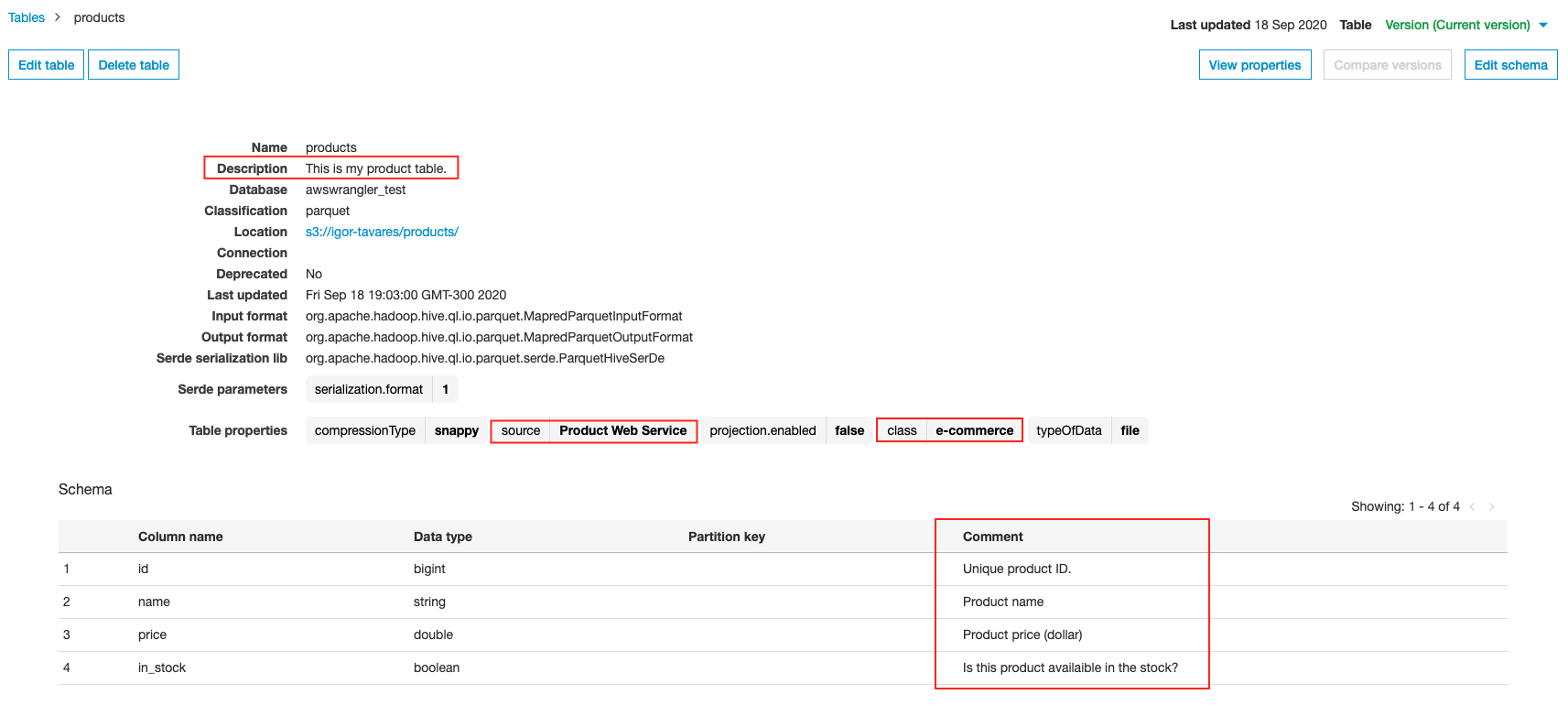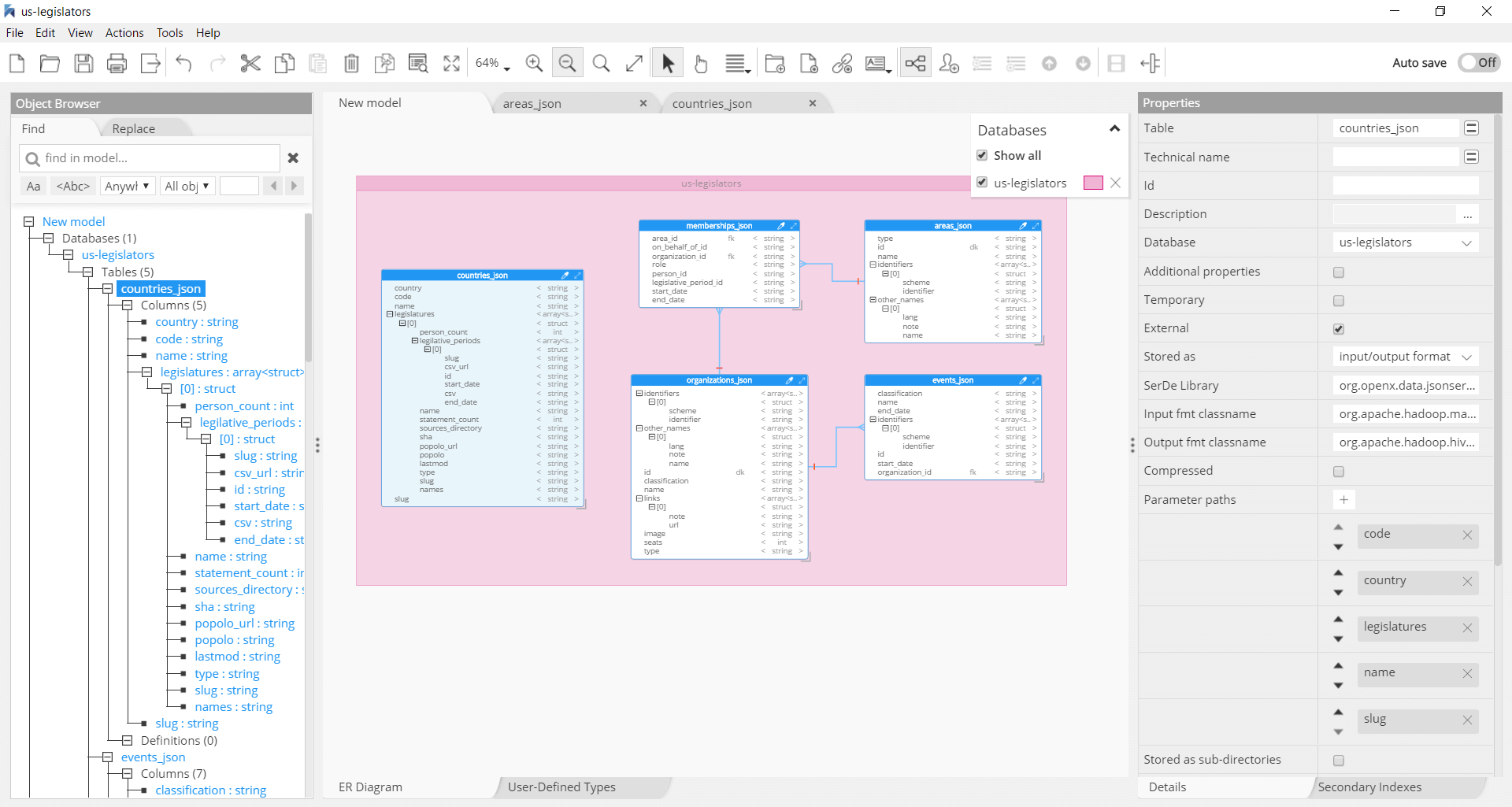Glue Catalog
Glue Catalog - It acts as an index to the location, schema, and runtime metrics of your data sources. For more information, see aws glue data catalog. Unified discovery and analysis using amazon athena, amazon redshift, and more. To build a foundation for discovery. Aws glue has released a new feature, sql views, which allows you to manage a single view object in the data catalog that can be queried from sql engines. The data catalog contains table definitions, job definitions, schemas, and other control information to help you manage your aws glue environment. The aws glue data catalog is your persistent technical metadata store. You can visually create, run, and monitor extract, transform, and load (etl) pipelines to load data into your data lakes. You can create a single view object with a different sql version for each engine you want to query, such as amazon athena, amazon redshift, and spark sql on amazon emr. The aws glue data catalog is your persistent metadata store for all your data assets, regardless of where they are located. The aws glue data catalog is a centralized repository that stores metadata about your organization's data sets. This article explores how aws glue manages and stores metadata in the data catalog, providing seamless access to data residing in amazon s3. You can visually create, run, and monitor extract, transform, and load (etl) pipelines to load data into your data lakes. It is a managed service that you can use to store, annotate, and share metadata in the aws cloud. To build a foundation for discovery. Speak the language of business by adding context and meaning to your data assets. It acts as an index to the location, schema, and runtime metrics of your data sources. It highlights the role of glue crawlers, querying. Key benefits of using aws glue catalog include: It provides a unified interface to store and query information about data formats, schemas, and sources. To build a foundation for discovery. With aws glue, you can discover and connect to more than 70 diverse data sources and manage your data in a centralized data catalog. It highlights the role of glue crawlers, querying. Key benefits of using aws glue catalog include: For more information, see aws glue data catalog. The aws glue data catalog is your persistent metadata store for all your data assets, regardless of where they are located. It provides a unified interface to store and query information about data formats, schemas, and sources. You can visually create, run, and monitor extract, transform, and load (etl) pipelines to load data into your data lakes. It highlights the. This article explores how aws glue manages and stores metadata in the data catalog, providing seamless access to data residing in amazon s3. It acts as an index to the location, schema, and runtime metrics of your data sources. For more information, see aws glue data catalog. It provides a unified interface to store and query information about data formats,. Streamline discovery, management, and analysis with amazon datazone and aws glue data catalog. The aws glue data catalog is your persistent metadata store for all your data assets, regardless of where they are located. It does not store the actual data, it only keeps track of where the data is, what it looks like, and how it is. It highlights. The aws glue data catalog is your persistent metadata store for all your data assets, regardless of where they are located. With aws glue, you can discover and connect to more than 70 diverse data sources and manage your data in a centralized data catalog. For more information, see aws glue data catalog. Think of aws glue catalog as a. For more information, see aws glue data catalog. The aws glue data catalog is your persistent metadata store for all your data assets, regardless of where they are located. You can create a single view object with a different sql version for each engine you want to query, such as amazon athena, amazon redshift, and spark sql on amazon emr.. It provides a unified interface to store and query information about data formats, schemas, and sources. It is a managed service that you can use to store, annotate, and share metadata in the aws cloud. It acts as an index to the location, schema, and runtime metrics of your data sources. The data catalog is part of aws glue, a. With aws glue, you can discover and connect to more than 70 diverse data sources and manage your data in a centralized data catalog. It does not store the actual data, it only keeps track of where the data is, what it looks like, and how it is. The data catalog is part of aws glue, a serverless data integration. It does not store the actual data, it only keeps track of where the data is, what it looks like, and how it is. The aws glue data catalog is a centralized repository that stores metadata about your organization's data sets. Streamline discovery, management, and analysis with amazon datazone and aws glue data catalog. The aws glue data catalog is. Aws glue has released a new feature, sql views, which allows you to manage a single view object in the data catalog that can be queried from sql engines. The data catalog contains table definitions, job definitions, schemas, and other control information to help you manage your aws glue environment. It highlights the role of glue crawlers, querying. Key benefits. The aws glue data catalog is a centralized repository that stores metadata about your organization's data sets. To build a foundation for discovery. Think of aws glue catalog as a table of contents for your data stored in s3. The aws glue data catalog is your persistent metadata store for all your data assets, regardless of where they are located. It acts as an index to the location, schema, and runtime metrics of your data sources. Streamline discovery, management, and analysis with amazon datazone and aws glue data catalog. For more information, see aws glue data catalog. The data catalog is part of aws glue, a serverless data integration service that helps you discover, prepare, move, and integrate data. The data catalog contains table definitions, job definitions, schemas, and other control information to help you manage your aws glue environment. You can visually create, run, and monitor extract, transform, and load (etl) pipelines to load data into your data lakes. Speak the language of business by adding context and meaning to your data assets. It highlights the role of glue crawlers, querying. Aws glue has released a new feature, sql views, which allows you to manage a single view object in the data catalog that can be queried from sql engines. This article explores how aws glue manages and stores metadata in the data catalog, providing seamless access to data residing in amazon s3. Unified discovery and analysis using amazon athena, amazon redshift, and more. The aws glue data catalog is a centralized metadata repository for all your data assets across various data sources.Access Amazon S3 data managed by AWS Glue Data Catalog from Amazon
Populating the AWS Glue Data Catalog AWS Glue
Build operational metrics for your enterprise AWS Glue Data Catalog at
Load data from AWS S3 to AWS RDS SQL Server databases using AWS Glue
AWS Glue 101 Lesson 1 The Glue Data Catalog And Crawlers YouTube
Build operational metrics for your enterprise AWS Glue Data Catalog at
AWS Glue Data Catalog as the centralized metastore for Athena & PySpark
5 Glue Catalog — AWS SDK for pandas 3.11.0 documentation
Simplify data discovery for business users by adding data descriptions
Glue Data Catalog
It Is A Managed Service That You Can Use To Store, Annotate, And Share Metadata In The Aws Cloud.
You Can Create A Single View Object With A Different Sql Version For Each Engine You Want To Query, Such As Amazon Athena, Amazon Redshift, And Spark Sql On Amazon Emr.
Key Benefits Of Using Aws Glue Catalog Include:
The Aws Glue Data Catalog Is Your Persistent Technical Metadata Store.
Related Post:









